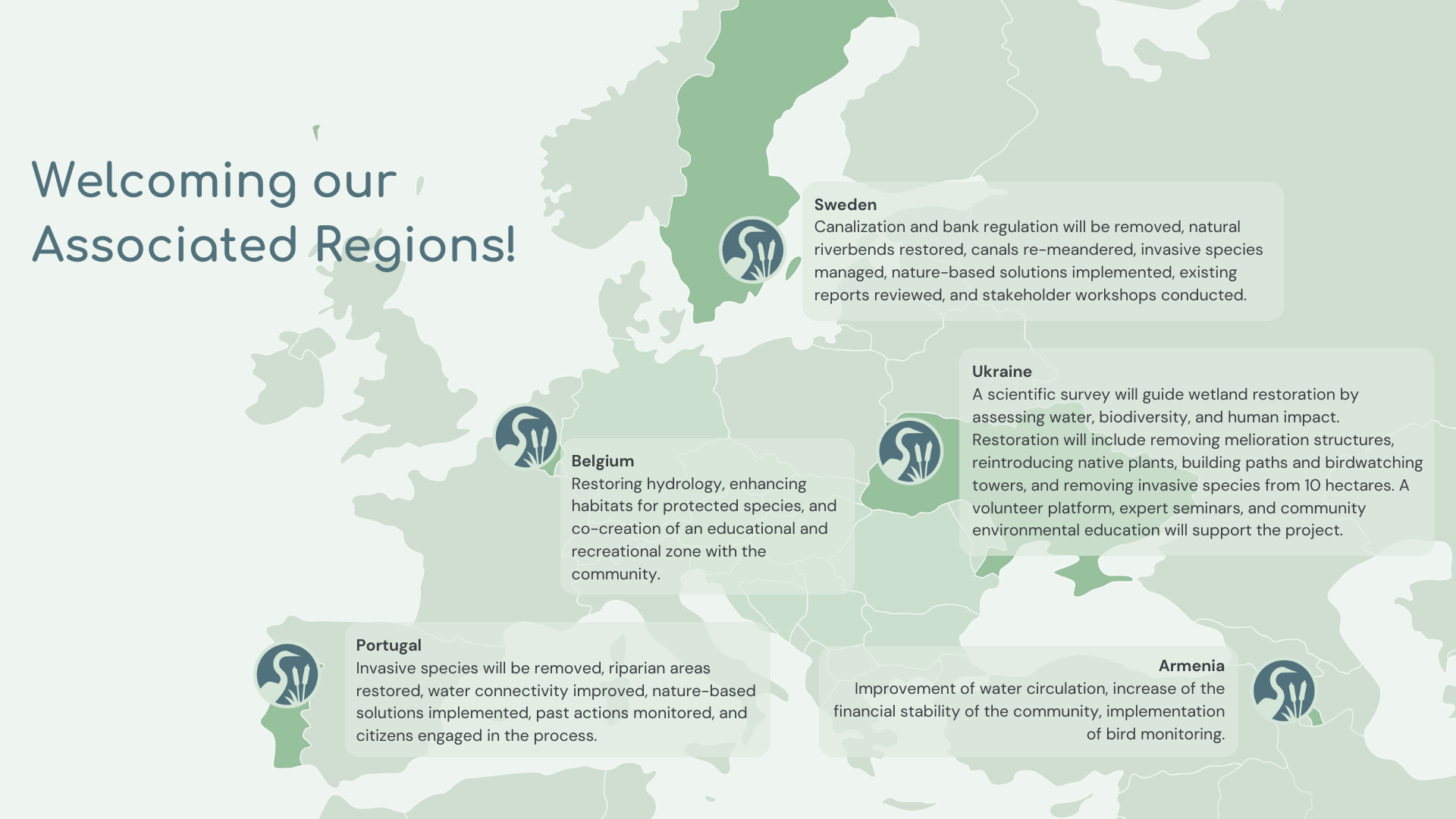Implementation sites
March Floodplains, Austria/Slovakia
Removal of Channel and Bank Regulations to Restore Natural Bank Forming Processes, Enhance Biodiversity, and Improve Flood Protection

Site features
The March (Slovakian: Morava) is a large river located in the Pannonian Basin and forms the border between Austria and Slovakia. During the large river regulation (1935-1964), the river was channelized, and the wetlands were decoupled from the main channel in both countries, resulting in riverbed incision.
From 1990 onwards, large-scale restoration approaches have been developed that aim at restoring the original river course and the lateral hydrological connectivity with the floodplain along most parts of the river in both countries.
The planned restoration action within Restore4Life is the first step of these large-scale concepts in the upstream section. The restoration aims at improving the biodiversity, integrity and functioning of the floodplain, flood protection and water retention in the area through an increased lateral connectivity between river and backwaters to compensate for changing climatic conditions.
Ecosystem
The March floodplains are designated as Ramsar site, Natura 2000 area, and Landscape protection area and are characterized by an extremely diverse population of breeding and migrating birds such as ducks (Anas crecca, Mareca penelope), the kingfisher (Alcedo atthis), red and black kite (Milvus milvus, Milvus migrans) and others. Among the rare and protected species are dragonflies (Stylurus flavipes, Ophiogomphus cecilia), amphibia, the weatherfish (Misgurnus fosslis), the beaver (Castor fiber) and the otter (Lutra lutra).
Facts & Figures

> 1.600 species > 200 endangered species

26.000.000 m3 flood water retained

40% floodplain forests lost

>7000 m side arms to restore
Challenges

Location
Austria near Hohenau/March
Size
Restored river length 0.9 km, affected Floodplain area approx. 3 km2;
The March floodplains are a unique European wetland that is home to many rare and endangered wetland species and a key resting place for migratory birds.
Existing projects
ꕥ MARTHA 95: Analyses of the ecological situation of the river and its wetlands in both countries and development of a general holistic restoration concept for March and Thaya (1995-98)
ꕥ MUF 99 – Implementation of restoration measures in the downstream part of the March on the Austrian side (river kilometer 25 – 15)
ꕥ Bilateral project for the development of a holistic restoration concept for the entire March river (2004-2007)
ꕥ Development of detailed restoration plans for the upstream part of the March (2013)
ꕥ Life+ Restoration Lower March wetlands (2017): Removal of Rip-rap, re-connection of side arms, restoration of bank dynamics (km 0-25)
ꕥ Klima (2022): Increase of water levels through groins in the downstream section
Restore4life implementation plans
The restoration plans include the removal of the current rip-rap at the banks to enable dynamic bank forming processes and an increased lateral connectivity with the floodplain backwaters during flooding. Riparian trees at the banks, which have to be removed in the course of the restoration, will be used as woody debris dams and short groynes to increase the bank heterogeneity and provide habitats for spawning fish. Willow shoots will be planted to initiate the establishment of a more natural riparian forest at the banks. Furthermore, the restoration will open the shoreline dam and lower and remove obstacles within a side arm to allow for an improved water supply of an oxbow lake.
Involvement of the community
School classes and the local community will be encouraged to join the monitoring of the restoration and the testing of methods to assess the ecological state. We will support ongoing and future activities and initiatives for environmental education and use the wetland center and the museums to promote our activities together with the school students involved.
Expected Impact
ꕥ Improved passive flood protection
ꕥ Improved water retention during droughts
ꕥ Improved riverbank dynamics and bank heterogeneity
ꕥ Improved lateral connectivity
ꕥ New habitats for the weather fish and amphibians in the re-connected side arm
ꕥ New habitats for species needing sandy banks such as odonata (Stylurus flavipes, Ophiogomphus cecilia), birds (Charadrius dubius, Actitis hypoleucos, Alcedo atthis) and plants (FH 3270 – muddy river banks with pioneer vegetation)
ꕥ New habitats for fish
Site gallery






